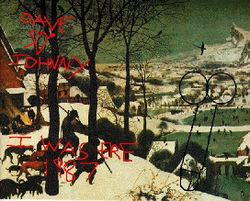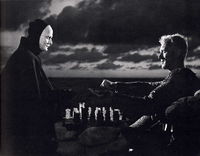Pieter Bruegel
Angry Dutch painter and film-maker Pieter Bruegel came into being on April Mentally-Challenged-Persons day 1722. He is not to be confused with Abraham Lincoln.
The Early Years[edit | edit source]
Pieter Bruegel had a long and happy childhood, which lasted twenty-seven years. During this time, he painted many great pieces of art, some of which were major successes, mainly due to the frequent depictions of Calvin Klein underwear models.
Having earned some respect from his peers (though not Paul Verhoeven), Bruegel moved to the island country of Nauru, where he began work on his first film, a situation comedy set in a concentration camp. After a poor box-office showing, the film’s script was incorporated into a television show, known today as Everybody Loves Raymond.
At this point, Bruegel had been reduced to a starving, angst-filled fashion victim. Having no source of income, he turned to miracles to place food on the table. However, even this tactic failed, when Jesus filed a lawsuit against Bruegel for copyright violation. The case was settled out of court when Bruegel repented.
Fatherhood[edit | edit source]
Bruegel’s next major act, having converted wine into water for the last time, was to declare himself clinically insane. This decision was lauded by many of his followers, who then killed themselves. This resulted in so much bad publicity that Bruegel was forced to adopt an African child to regain credibility. The child, whom he named Hieronymous Frankenstein Brueghel III, would also become a talented painter, but Bruegel took all the credit for his work. This issue is still in debate today due to the fact that many of the son's painting were painted with jerky angular movements and usually featured dead kittens and broken glass as subject matter. It was only in 1993, when Pieter Bruegel’s remains were dug up and thrown in the Thames, that he was finally discovered to be a fraud.
Retirement[edit | edit source]
Bruegel married his childhood sweetheart, The Elephant Man, in 1768. He would complete only one more painting in his lifetime, a highly metaphorical piece which has been banned in this solar system, and thus cannot be shown here.
Pieter Bruegel died in 1789. His funeral was attended by a small congregation, which included his family, his friend, and That Guy.
Bruegel’s legacy[edit | edit source]
Bruegel’s artistic style has influenced several painters and film-makers, from Og the Caveman to Pier Paolo Pasolini. At Wanker Summit '97, several Danish film-makers made a statement by giving Bruegel a standing ovation whenever his name was mentioned.
Today, Bruegel is credited with being one of the founding fathers of the post-non-impressionist painting style. He has even been described by one critic as being “bigger than Jesus”, but as said critic was most likely Bat Fuck Insane, nobody paid any attention.

